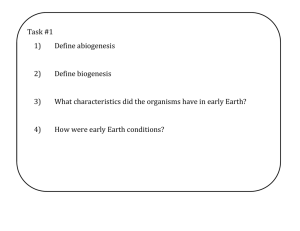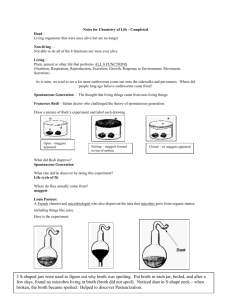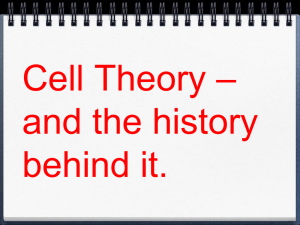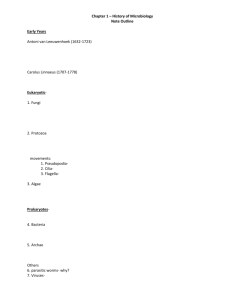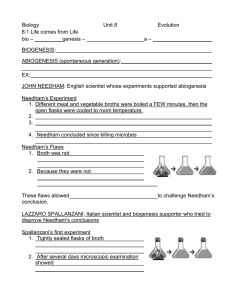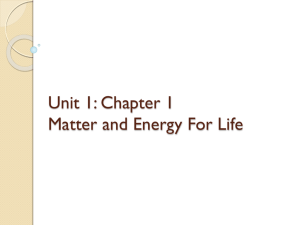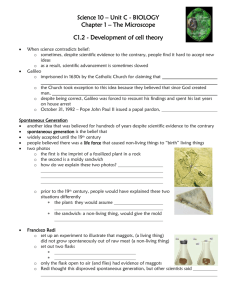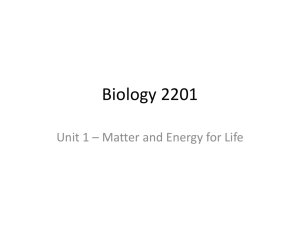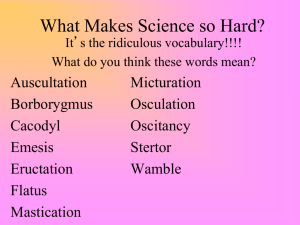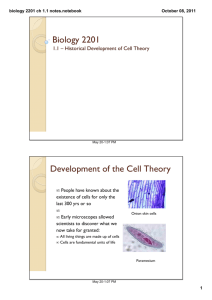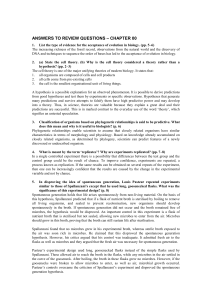Unit 1 : Cell Theory Notes - Mr. Lesiuk
advertisement
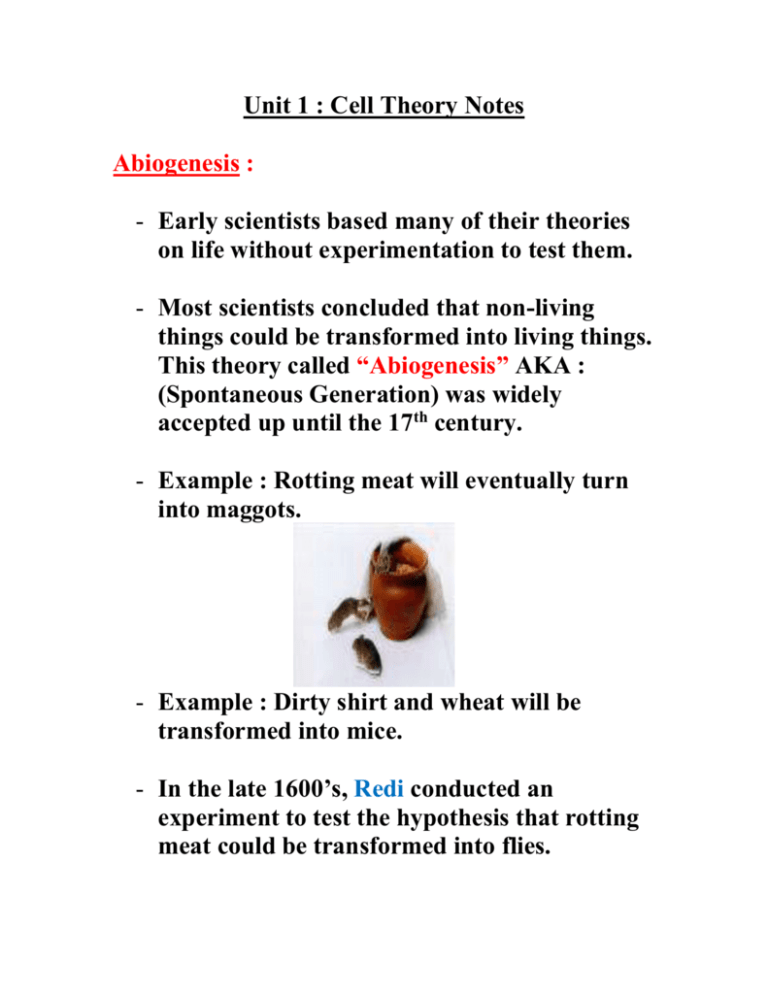
Unit 1 : Cell Theory Notes Abiogenesis : - Early scientists based many of their theories on life without experimentation to test them. - Most scientists concluded that non-living things could be transformed into living things. This theory called “Abiogenesis” AKA : (Spontaneous Generation) was widely accepted up until the 17th century. - Example : Rotting meat will eventually turn into maggots. - Example : Dirty shirt and wheat will be transformed into mice. - In the late 1600’s, Redi conducted an experiment to test the hypothesis that rotting meat could be transformed into flies. - His control group was sealed, while his experimental group was open. The maggots and flies were only present in the experimental group. His observations allowed him to conclude that flies can only come from other flies. - Critics did not accept Redi’s results because they believed that circulating fresh air might be an active ingredient for abiogenesis to take place. So he confirmed his theory by re-testing it with mesh covered jars. - Scientists continued to cling to the theory of abiogenesis due to the action of microbes observed in John Needham’s experiments. - Needham’s experiments involved boiling beef broth and sealing it in a closed container; after a few days the broth became cloudy, when observed under a scope it was teeming with microbes, which apparently were spontaneously created. - By the mid 18th century, Lazzaro Spallanzani and Louis Pasteur dealt the final blows to the theory of abiogenesis. Spallanzani Experiment Louis Pasteur - By boiling the broth longer and preventing broth from coming in contact with the surrounding air the beef broth remained clear, when the sample of the broth was allowed to contact the open air it became contaminated. Pasteur’s Observations - To this very day many dairy products are pasteurized, which is a flash heating that kills the majority of microbes. Pasteurization followed by refrigeration slows the spoiling of these food products. Pasteurization of milk Cell Theory: - The invention of the microscope in the 1600’s helped scientist observe cells. - The finding of several scientists over the next 200 years paved the way for Schwann and Schleiden to build the foundations for the “Cell Theory”. - This theory is built on two principles: 1. A cell is the smallest unit of life and all living things are composed of cells. 2. Cells can only arise from pre-existing cells.

